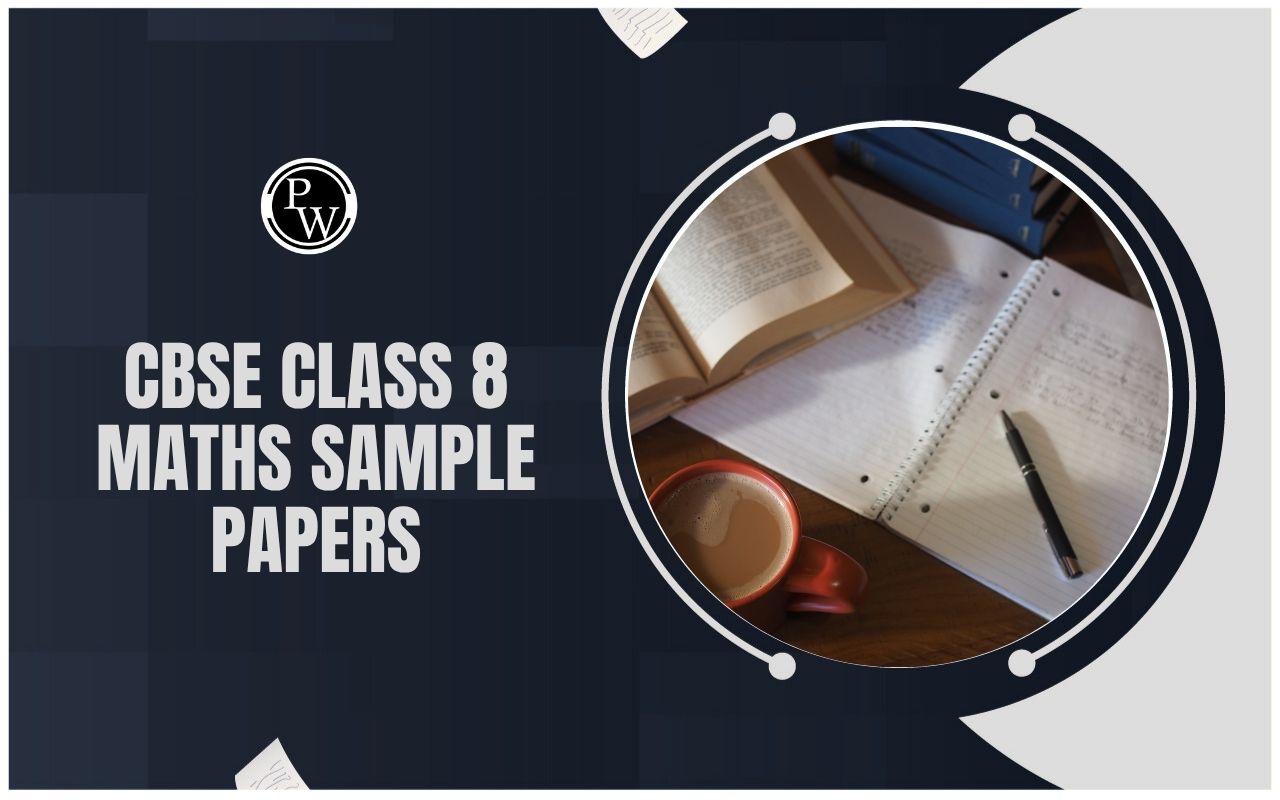
RS Aggarwal Solutions for Class 8 Maths Chapter 14 Exercise 14.2: The Physics Wallah academic team created a comprehensive answer for Chapter 14 Polygons in the RS Aggarwal class 8 textbook. Before reviewing the Chapter 14 Polygons Exercise-14B solution. Use NCERT solutions to help you tackle class 8 questions and get good grades.
The Physics Wallah specialist posted the NCERT maths solutions for class 8. To ensure that one has a firm understanding of Chapter 14 polygons, read the theory of Chapter 14 polygons before attempting to solve every numerical problem in exercise 14B.RS Aggarwal Solutions for Class 8 Maths Chapter 14 Exercise 14.2 Polygons Overview
Chapter 14 Exercise 14.2 of RS Aggarwal's Class 8 Maths textbook delves deeper into the properties and characteristics of polygons. This exercise focuses on the concepts of convex and concave polygons, providing students with a more comprehensive understanding of these geometric shapes. Students learn how to differentiate between these two types of polygons based on their angles and vertex arrangement. The exercise further explores the calculation of the exterior angles of a polygon, where students use the formula that the sum of the exterior angles of any polygon Additionally, the exercise includes problems that require identifying various polygons, calculating the number of sides given certain angle measures, and applying the angle sum properties to solve real-world problems. By engaging with these exercises, students enhance their analytical skills and develop a solid grasp of geometric concepts, which are essential for tackling more advanced topics in mathematics. Overall, Exercise 14.2 provides a thorough exploration of polygons, building a strong foundation for future studies.RS Aggarwal Solutions for Class 8 Maths Chapter 14 Exercise 14.2 PDF
Below we have provided RS Aggarwal Solutions for Class 8 Maths Chapter 14 Exercise 14.2 in detail. This chapter will help you to clear all your doubts regarding the chapter. Students are advised to prepare from these RS Aggarwal Solutions for Class 8 Maths Chapter 14 Exercise 14.2 before the examinations to perform better.RS Aggarwal Solutions for Class 8 Maths Chapter 14 Exercise 14.2 PDF
RS Aggarwal Solutions for Class 8 Maths Chapter 14 Exercise 14.2 (Ex 14B)
Below we have provided RS Aggarwal Solutions for Class 8 Maths Chapter 14 Exercise 14.2 Polygons –Tick (√) the correct answer in each of the following:
Question (1) How many diagonals are there in a pentagon?
Ans: (a) 5
Question (2) How many diagonals are there in a hexagon?
Ans: (c) 9
Question (3) How many diagonals are there in an octagon?
Ans: (d) 20
Question (4) How many diagonals are there in a polygon having 12 sides?
Ans: (d) 54
Question (5) A polygon has 27 diagonals. How many sides does it have?
Ans: (c) 9 Solution: Let the number of side of the polygon be n. Hence, number of the sides can’t be negative. So,
∴ n – 9 = 0
⇒ n = 9
Hence, number of the sides can’t be negative. So,
∴ n – 9 = 0
⇒ n = 9
Question (6) The angles of a pentagon are x o , (x + 20) o , (x + 40) o , (x + 60) o and (x + 80) o . The smallest angle of the pentagon is
Ans: (b) 68 o Solution: We know, sum of interior angles = (2n – 4) right ∠s. = (10 – 4) × 90 = 540 ∴ x + x + 20 + x + 40 + x + 60 + x + 80 = 540 ⇒ 5x + 200 = 540 ⇒ 5x = 540 – 200 ⇒ 5x = 340 ⇒ x = 68 oQuestion (7) The measure of each exterior angle of a polygon is 40 o . How many sides does it have?
Ans: (b) 9 Solution: We know, sum of all exterior angles = 4 right ∠s = 360 o Let the number of the polygon be n.
Question (8) Each interior angle of a polygon is 108 o . How many sides does it have?
Ans: (c) 5
Question (9) Each interior angle of a polygon is 135 o . How many sides does it have?
Ans: (a) 8 ⇒ 45n = 360
⇒ n = 8
⇒ 45n = 360
⇒ n = 8
Question (10) In a regular polygon, each interior angle is thrice the exterior angle. The number of sides of the polygon is
Ans: (b) 8 Solution: Let the number of sides of the polygon be n.
Question (11) Each interior angle of a regular decagon is
Ans: (c) 144 oQuestion (12) The sum of all interior angles of a hexagon is
Ans: (b) 8 right angle ∠s Solution: Sum of all interior angles of a hexagon = (12 – 4) right ∠s = 8 right ∠s.Question (13) The sum of all interior angles of a regular polygon is 1080 o . What is the measure of each of its interior angles?
Ans: (a) 135 o Solution: Sum of all interior angles of a regular polygon = (2n – 4) right ∠s Let the number of sides of the regular polygon be n.
Question (14) The interior angle of a regular polygon exceeds its exterior angle by 108 o . How many sides does the polygon have?
Ans: (d) 10 Solution: Let the number of sides of the polygon be n.
Benefits of RS Aggarwal Solutions for Class 8 Maths Chapter 14 Exercise 14.2
Here are the benefits of RS Aggarwal Solutions for Class 8 Maths Chapter 14 Exercise 14.2 Polygons :Enhanced Understanding of Polygons: The solutions provide detailed explanations of complex polygon concepts, including convex and concave polygons, allowing students to understand these geometric shapes thoroughly.
Clear Differentiation of Polygon Types: Students learn to differentiate between convex and concave polygons based on angles and vertex arrangement, which is crucial for solving geometry problems accurately.
Mastery of Angle Calculations: The solutions cover calculations involving the sum of interior and exterior angles, helping students apply these concepts effectively in various problems.
Application of Theorems: The exercise solutions guide students in applying theorems and formulas, such as the exterior angle sum property, to solve complex problems, enhancing logical reasoning.
Improved Problem-Solving Skills: Step-by-step solutions encourage analytical thinking and improve problem-solving skills, preparing students for higher-level mathematics.
Exam Preparedness: By practicing these solutions, students gain confidence and proficiency, equipping them with the skills needed to excel in exams.
Real-World Application: Understanding polygon properties and calculations is essential for real-world applications in fields like architecture and engineering, making these solutions valuable beyond academics.
RS Aggarwal Solutions for Class 8 Maths Chapter 14 Exercise 14.2 FAQs
What topics are covered in RS Aggarwal Solutions for Class 8 Maths Chapter 14 Exercise 14.2?
How do RS Aggarwal Solutions for Class 8 Maths Chapter 14 Exercise 14.2 help with understanding convex and concave polygons?
How can RS Aggarwal Solutions for Class 8 Maths Chapter 14 Exercise 14.2 benefit exam preparation?
Why are the RS Aggarwal Solutions for Class 8 Maths Chapter 14 Exercise 14.2 important for real-world applications?









